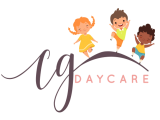Our Curriculum
Let's Play!
A RELATIONSHIP - BASED CURRICULUM FOR FAMILY CHILD CARE
Introduction
Welcome to Let’s Play! A Relationship Based Family Child Care Curriculum. Let’s Play! Is specifically designed for mixed age family child care programs as a way to support children’s development through responsive caregiving and play-based learning. Family child care providers are well positioned to develop longstanding, supportive relationships with children and their families, siblings may attend the same program and many school care. In addition, as children interact with older and younger peers, they have enhanced opportunities to engage in more complex play and problem-solving together. By creating these rich and nurturing learning environments, family child care providers can support children’s growth across all learning domains as well as lay the foundation for resiliency.
The Let’s Play! curriculum covers three broad themes: Our Community, Our Environment, and Our Impact. Over the course of these 10 months, children learn about themselves and others within the family child care home, observe and explore the surrounding environment and then discover how their actions can impact themselves, other, and the world around them. Each theme can be explored over the course of several months, with the Sample Weekly Planners offering a set of more specific topics for hands-on learning. The open-ended nature of most of the suggested activities makes them suitable for all ages. Some specific adaptations for infants and toddlers are included as well as ways to support
inclusion for all types of learners. Further developmentally appropriate adjustments to the activities and timing can be made to meet the needs and interests of the children and families.
Let’s Play! features a set of sample weekly planners that are filled with activities designed to promote learning through play. Since each family child care provider and group of children are unique, we have designed the planners so that family child care providers can choose which interest areas and activities to highlight over the course of the week in order to tailor the curriculum for their own groups. Each weekly planner also includes two small group explorations that can be expanded on throughout the week. Some of these small group explorations come.

PROFESSIONALISM AND LEADERSHIP
Professionalism in the early care and education field requires a commitment to providing the highest possible equality services to children and their families, to life long personal and professional growth and learning, and to ethical conduct. These are the basis for making educated decisions and being able to reflect on and adjust planning and practice.
Professionalism involves collaboration and embracing responsibility. It involves having the curiosity and drive to search for information in order to gain an understanding to pertinent issues, especially those pertaining to the education of children. It also involves the ability to advocate for children and for high-quality early care education.
Leadership denotes not only holding formal positions of authority, but also possessing the qualities of vision, skill, and initiative that provide inspiration and a sense of security to others. Leadership is often evident in individuals regardless of their title. Professionals who exhibit such qualities and utilize them to facilitate the growth and development of others are leaders and carry the ensuing responsibilities of activity helping to shape the profession. Early childhood education relies on excellence in leadership. Providing vision, expressing high expectations, and demonstrating mutual respect for all parties are hallmarks of great leadership.
Environment
The environment of the work of an early childhood educator lies in the relationship between the educator and child, in combination with learning experiences and nurturing environments. The higher the quality of these relationships and experiences, the better the outcomes for the children. Quality learning experiences involves careful planning, implementation, but also of the physical and social settings that surround them.
Environment and curriculum are interdependent parts of a continuum of care and education in early childhood settings.
First, both environment and curriculum must be designed for the children. Secondly, curriculum professionals must include in their thinking all areas in the early childhood setting – indoors.
Lastly, aesthetically pleasing and well-designed surroundings facilitate children’s relationships with people and materials, therefore laying the foundations for exploration, interaction, and meaningful connections.
